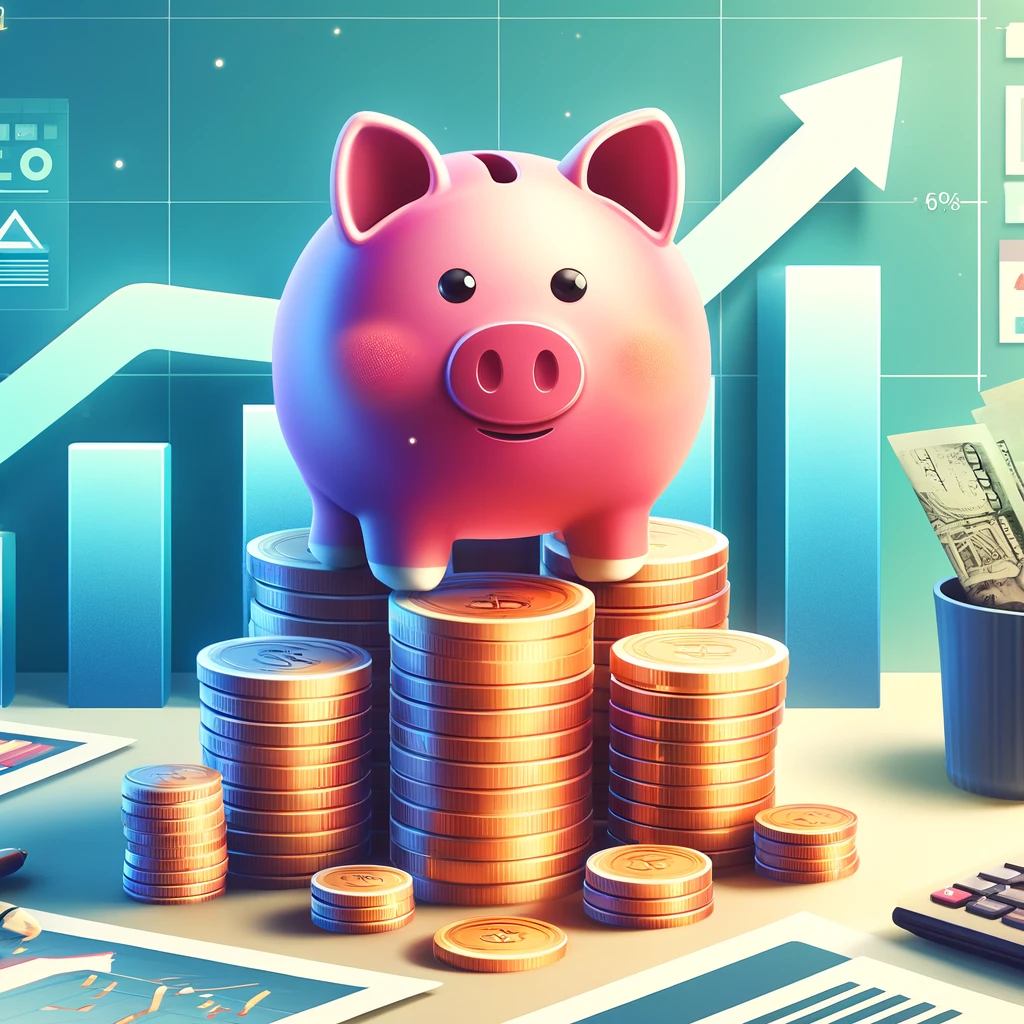Saving money is essential for financial security and future investment opportunities. Among various options, high-yield savings accounts stand out for offering higher interest rates than traditional savings accounts. But what exactly is a high-yield savings account, and how can it benefit you? This guide explores the specifics, advantages, and factors to consider, helping you make informed financial decisions.

Understanding High-Yield Savings Accounts
A high-yield savings account offers significantly higher interest rates than a standard savings account, typically provided by online banks or financial institutions with low overhead costs. These accounts help savers grow their money more efficiently.
How High-Yield Savings Accounts Work
High-yield savings accounts operate similarly to traditional savings accounts but offer the advantage of higher interest rates. The money deposited accrues interest over time, compounded daily, monthly, or annually, based on the bank’s policies. The key distinction is the Annual Percentage Yield (APY), which is significantly higher in high-yield savings accounts, allowing your savings to grow more rapidly.
Benefits of a High-Yield Savings Account
- Higher Interest Rates: The most significant advantage is the attractive interest rates, often several times higher than regular savings accounts.
- Safety and Security: Typically insured by the FDIC up to $250,000 per depositor, ensuring your money is safe.
- Liquidity: Unlike other high-interest investments, such as CDs, high-yield savings accounts allow easy access to your money.
- No or Low Fees: Many accounts come with no monthly maintenance fees or minimum balance requirements.

Comparing High-Yield Savings Accounts to Other Savings Options
When considering where to park your savings, it’s crucial to compare high-yield savings accounts with other options available in the market. Here are a few alternative options to consider:
- Traditional Savings Accounts: Generally offer lower interest rates, making high-yield options more financially advantageous.
- Money Market Accounts: Provide higher interest rates and may offer check-writing privileges but usually require higher minimum balances.
- Certificates of Deposit (CDs): Offer fixed interest rates for a specific term but require the depositor to lock in their money until maturity.
Who Should Consider a High-Yield Savings Account?
High-yield savings accounts are ideal for individuals who want to maximize their savings without taking on significant risk. They are particularly beneficial for:
1. Emergency Fund Builders

If you’re saving for unforeseen expenses, a high-yield savings account is perfect because of its liquidity and high interest rates.
2. Short-Term Savers: Those saving for short-term goals, such as a vacation or a down payment on a car, can benefit from higher returns.
3. Risk-Averse Investors: High-yield savings accounts appeal to individuals who prefer low-risk investments that still offer reasonable returns.
How to Choose the Best High-Yield Savings Account

Several key factors must be considered when selecting a high-yield savings account to ensure that you make the most of your savings:
- APY Comparison: Compare the Annual Percentage Yield (APY) offered by different banks to find the best rate.
- Fees and Minimum Balances: Ensure the account has no hidden fees and reasonable minimum balance requirements.
- Customer Service and Access: Choose a bank with excellent customer service and easy access to your funds through ATMs, online banking, or mobile apps.
- Verify that the bank is FDIC-insured to ensure your deposits are protected.
Opening a High-Yield Savings Account
The process for opening a high-yield savings account is straightforward and can be broken down into a few simple steps:
- Research: Compare different high-yield savings accounts offered by various banks.
- Application: Apply online or visit a physical branch, providing necessary personal information.
- Fund Your Account: Transfer money from an existing bank account, deposit a check, or set up a direct deposit.
- Manage Your Account: Use online banking tools to monitor your account, transfer funds, and track interest earnings.

Maximizing the Benefits of a High-Yield Savings Account
To get the most out of your high-yield savings account, consider these tips:
1. Automate Your Savings: Set up automatic transfers from your checking account to ensure consistent savings.
2. Regularly Review Rates: Periodically check to ensure you’re getting the best rate available.
3. Avoid Frequent Withdrawals: Aim to keep your balance intact to maximize interest earnings.
Common Misconceptions About High-Yield Savings Accounts
- High Risk: Many people mistakenly believe that higher interest rates come with higher risk. However, FDIC insurance ensures that your money is as safe as it would be in a traditional savings account.
- Complicated to Open: Most high-yield savings accounts are available online, so opening an account is often quicker and easier than visiting a physical bank.
- Limited Access: While some high-yield savings accounts are online-only, they offer easy access to your funds through transfers, ATMs, and mobile banking.
Frequently Asked Questions
What is the difference between a high-yield savings account and a traditional savings account? A high-yield savings account offers significantly higher interest rates than a traditional one.
Are high-yield savings accounts safe? Yes, they are typically insured by the FDIC up to $250,000 per depositor.
How do I choose the best high-yield savings account? Consider factors like interest rates, fees, minimum balance requirements, customer service, and FDIC insurance.
Can I access my money anytime with a high-yield savings account? Yes, high-yield savings accounts offer easy access to your funds without penalties.
Are there any fees associated with high-yield savings accounts? Many do not charge monthly maintenance fees, but it’s essential to read the terms and conditions.
How often do high-yield savings account interest rates change? Interest rates can fluctuate based on the market and the bank’s policies.
Conclusion
A high-yield savings account is an excellent tool for anyone who wants to grow their savings more effectively. These accounts offer higher interest rates, safety, and liquidity, making them a compelling alternative to traditional savings methods. By understanding how they work, who they’re best suited for, and how to choose the right one, you can make informed decisions that will improve your financial well-being. Start exploring high-yield savings accounts today to maximize your savings potential and achieve your financial goals.






Leave a Reply